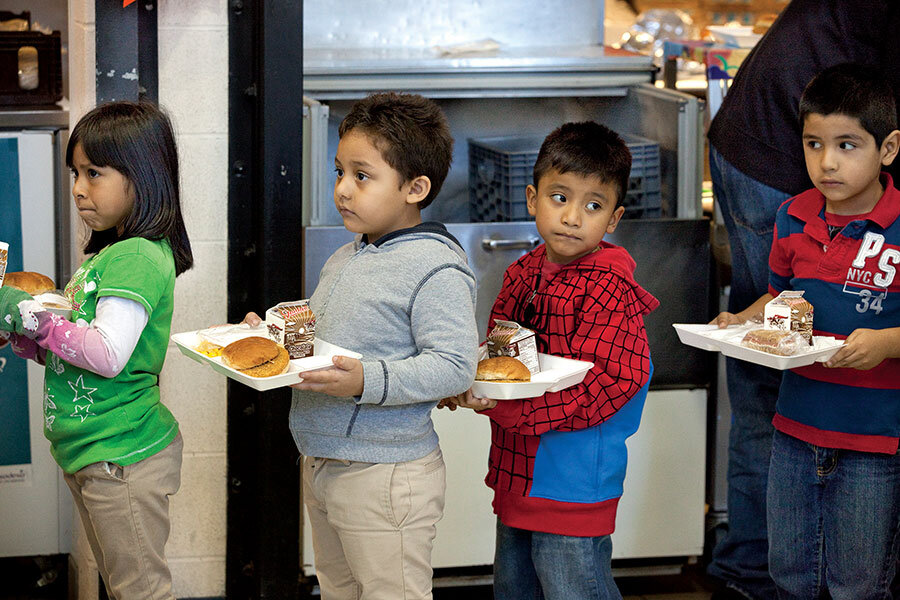Lunch, louder than you can imagine
Loading...
Elementary school lunchrooms might be able to power whole neighborhoods if energy could be harnessed from decibels and channeled into the grid. I had not realized the possibilities before yesterday. As children, my siblings and I walked the few blocks home from school at noon to eat lunch at our own kitchen table. When my son attended Binford Elementary in Bloomington, Ind., I entered his lunchroom on only a few brief occasions. I remember it being loud. Now Tim’s son, Connor, is enrolled in that same school, where he chows down among well over a hundred third-grade cohorts under the aegis of a stalwart crew of cooks, servers, custodians, and other supervisory staff.
Yesterday, as a volunteer on the school’s Recycling Committee, I experienced the full tidal rhythm of this recharging break for the first time in years. I’d offered to help run lunchtime balloting for students to select what they considered the best of their artwork depicting the school’s recycling initiative. We hung the top five contenders from each class (as determined by their teachers) in rows, identifying the brightly colored posters only by letter (A to E). As each grade arrived to eat, our group orchestrated the voting process.
We’d made our preparations in the quiet of the teachers’ lounge, and joined the tide of the school’s youngest students, third-graders, en route to the cafeteria. As the kids lined up, got trays, and found seats, their pent-up vocal energy flooded the room, tsunami-like, floor to high ceiling, wall to trembling wall.
It was stunning. I spotted Connor contributing lustily to the palpable cacophony. We would never have been able to describe the voting process but for Kenny, a custodian and self-described “crowd-control guy and social worker” (at one point I saw him casually visiting with a boy seated alone). For 10 minutes he calmly walked about the room letting the kids vocally let loose, as they needed to – and then with a slow count to five over the PA system hushed the place so that we could explain how to vote. Once the process began, table by table, the volume rose and peaked anew.
Over the course of three more half-hour periods, the fourth-, fifth-, and sixth-graders came in succession, with only brief echoing lulls between them as Kenny swept the floors and tables were wiped clean. With each group the noise abated a bit and its timbre perceptibly deepened. Compared with the third-graders, the sixth-graders seemed positively resonant and measured; we could almost – but not quite – converse among ourselves.
By the end of two hours our ears were ringing, but the ballots were in. Out of hundreds of children ages 8 to 11, only two declined to vote, a turnout we adults can only dream of come Election Day.
I helped tally in the deep, almost surreal peace of the teachers’ lounge, and then left to bike the few quiet blocks home. As I crossed the school parking lot I saw two white-capped lunchroom workers bringing in supplies from an adjacent building that houses kindergarten through second grade. I could only imagine what they encounter in that lunchroom, serving even younger children with higher-pitched voices. I should have stopped to thank them for the work they do on our kids’ behalf. But it struck me that they were enjoying the quiet as well – and might not want to hear another word for hours.
And so I salute you, lunchroom cooks, servers, and multitasking Kennys everywhere – quietly and in writing. See you ... but maybe not till next year.







